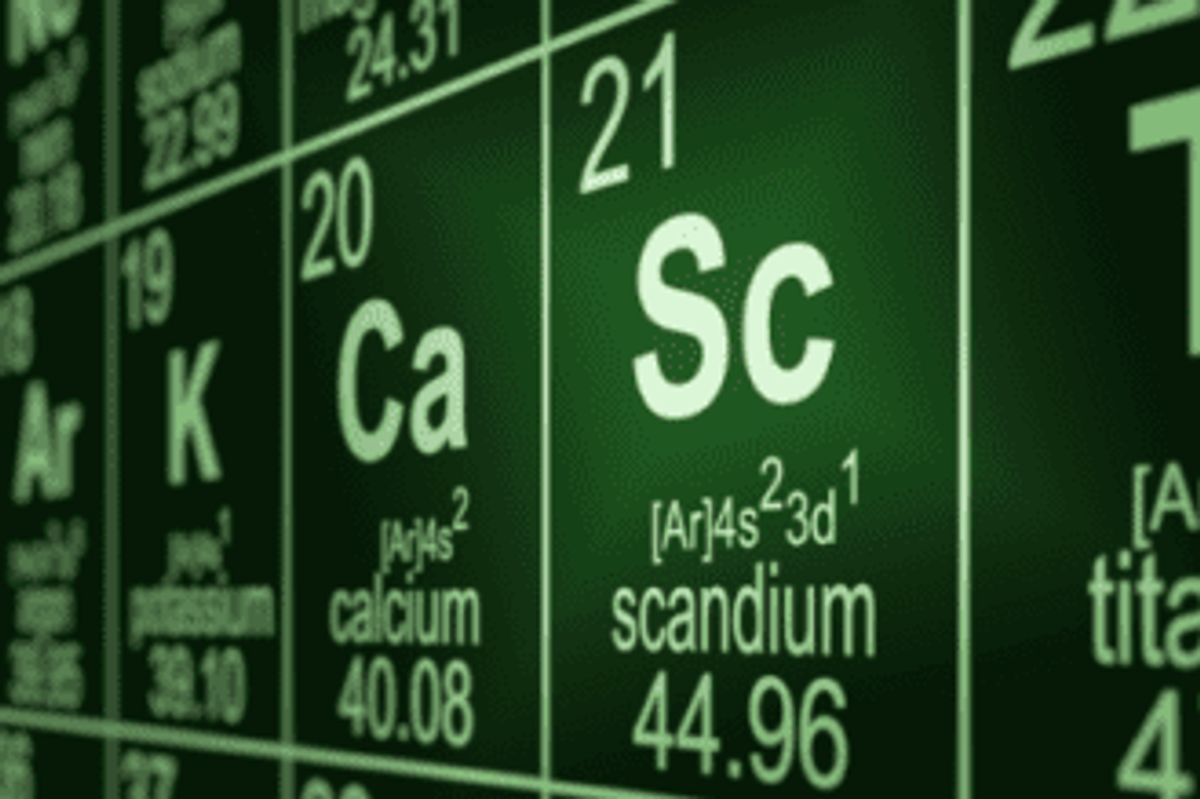
Investors might not be entirely familiar with scandium, but the metal has been gaining a lot of traction with the resource market. Here’s an overview of scandium and what it is used for.
Scandium is one of a handful of elements that was predicted to exist by Dmitri Mendeleev, the 1860’s inventor of the periodic table of elements, before it was actually discovered in nature. A Swedish chemistry professor, Lars Fredrik Nilsson eventually discovered scandium (Sc) in 1879, calling it after its location of origin, Scandinavia.
In that regard, what is scandium, investors may wonder.
To start with, physically, scandium is a soft, silvery metallic element. Its atomic number is 21, making it the lightest of the transition metals. However, scandium exhibits some rare earth element (REE’s) characteristics and is often classed as a REE, along with yttrium. For scandium, this is more a marketing convention than one based in science, but scandium is known to be found in concert with REE’s, so the association is valid in some physical occurrences and then of course in a production/recovery sense as well.
Scandium, like other rare-earth elements, is not particularly rare on the surface of the earth. It is more abundant than lead, mercury, and precious metals generally, and occurs naturally at around the same rate as cobalt.
However, scandium has a low affinity for other minerals, so rarely manages to concentrate into higher grades, making commercially usable deposits very rare. Scandium wants to exist in an oxide form in nature (Sc2O3), is known in this form as scandia, and is difficult to maintain in pure elemental (metal) form. In fact, scandium was only isolated into its pure form in 1937, and the first full pound of pure scandium metal was produced in 1960.
Scandium’s Emerging Applications
While its uses have been studied for years, it has only found its way into military applications and small volume civilian products. Availability has definitely hindered application, but not our scientific understanding and ideas development, if/when scandium can be sourced in volume and at reasonable cost.
Scandium applications fall into three types of use: (1) to strengthen alloys of aluminum, either by itself or as an addition to existing multi-metal Al alloys in use today, (2) to employ certain outstanding electrical properties and heat resistance abilities and (3) to capture unique optical properties including natural lighting effects in lamps, improvements in lasers and crystals, and video screens..
A good pointer for future scandium applications is yttrium, scandium’s neighbor on the periodic chart. Ytrrium is more commonly found in concentration than scandium, and as a result is commercially available today in quantity, with an estimated 3Bn global sales market. Yttrium has a much closer chemical similarity to REE’s, and is almost always found in the presence of lanthanide elements, so is typically a by-product of REE ore separation and refining. Yttrium is employed as a phosphor, imparting red color to cathode ray tubes and LED’s. It also has heat resistance qualities that can be used in very high heat environments (jet engine exhaust nozzles), or in solid oxide fuel cells as a stabilizer for the solid electrolyte, where it is applied for its heat resistance and electrical conductivity. Yttrium is also used in electrodes and lasers.
In a number of these respects scandium and yttrium are similar—except that scandium dramatically outperforms yttrium in its electrical conductivity and heat resistance characteristics, has different optical properties, and has far superior alloying results with aluminum. Yttrium is significantly cheaper (today 40X) than scandium, and probably always will be cheaper based on occurrence at grade, but where fractional quantities are required to make transformational impact on material performance, many of yttrium’s significant and established markets are vulnerable to substitution from scandium.
Aluminum alloys. Scandium additions of up to 0.5 percent can double or triple the tensile strength of certain existing aluminum alloys, while retaining the malleability of aluminum so useful in achieving complex shapes in manufacturing. Certain Al-Sc alloys retain full weldability, and enhanced corrosion resistance – characteristics lost with stronger more complex alloy types that trade strength for reduced corrosion resistance and non-weldable material. A small amount of scandium in an aluminum alloy positively transforms the characteristics of the material across a number of key performance areas.
Solid Oxide Fuel Cells. These are devices that promote chemical reactions that oxidize a fuel source under high heat to generate electricity. They use a selective solid electrolyte to control the process, typically employing yttrium oxide (yttria) to stabilize the material against heat. Substituting scandium for yttrium as the stabilizing agent improves the power density of the units (better conductivity), lowers the temperature where reactions occur, lengthens the life of the unit dramatically and cuts the cost and stress of other components in the system.
Lasers/lighting. Certain lasers employ gadolinium scandium gallium garnets, and scandium is used in select high performance switches in computers. Scandium produces a natural light in a lighting element, very much like natural sunlight to the human eye. This quality is prized in critical applications such as TV studios, cinema/photography and stadium lighting systems. Current lighting products include scandium iodide additions to mercury vapor bulbs to create this daylight effect in enclosed spaces.